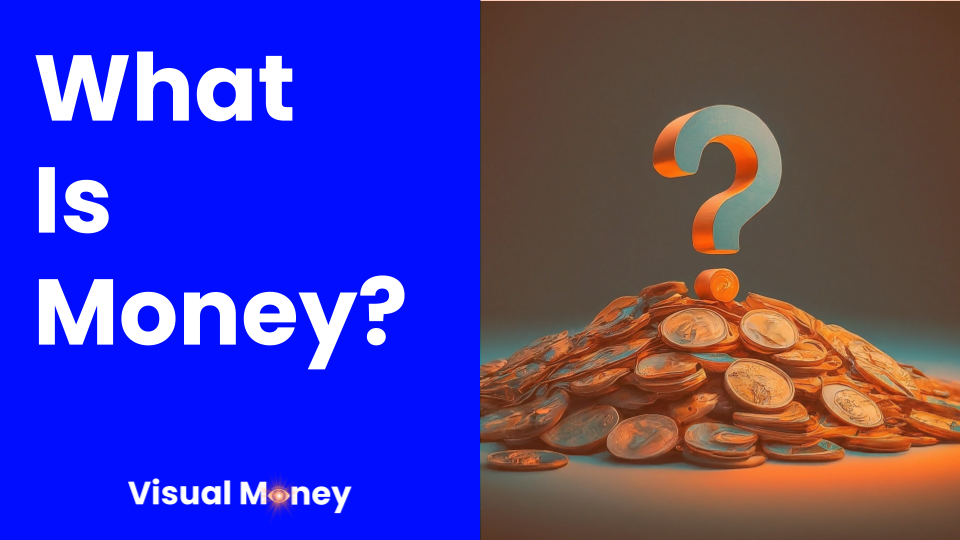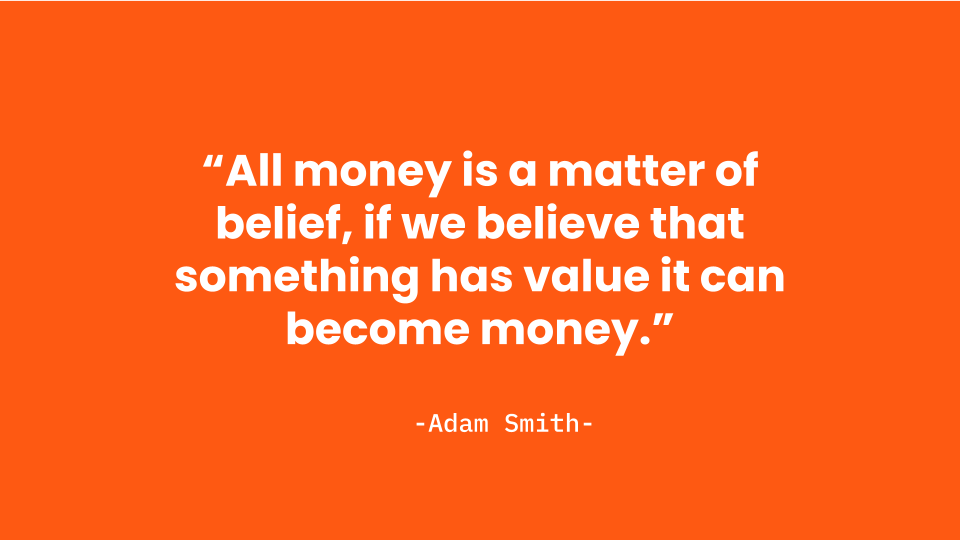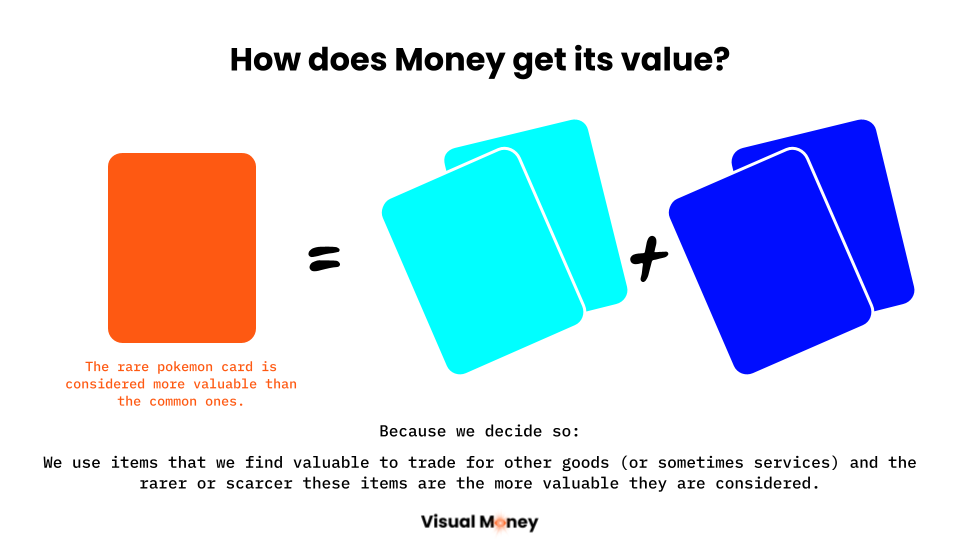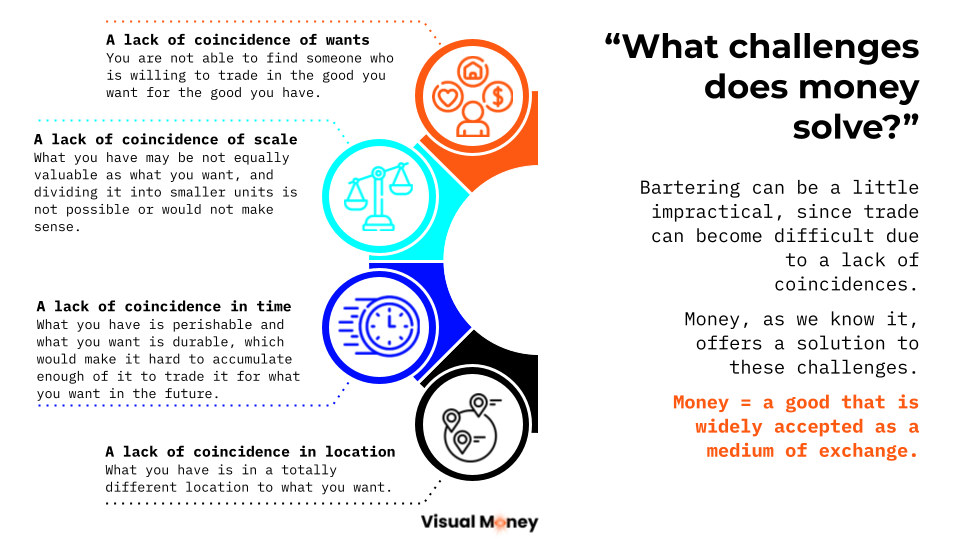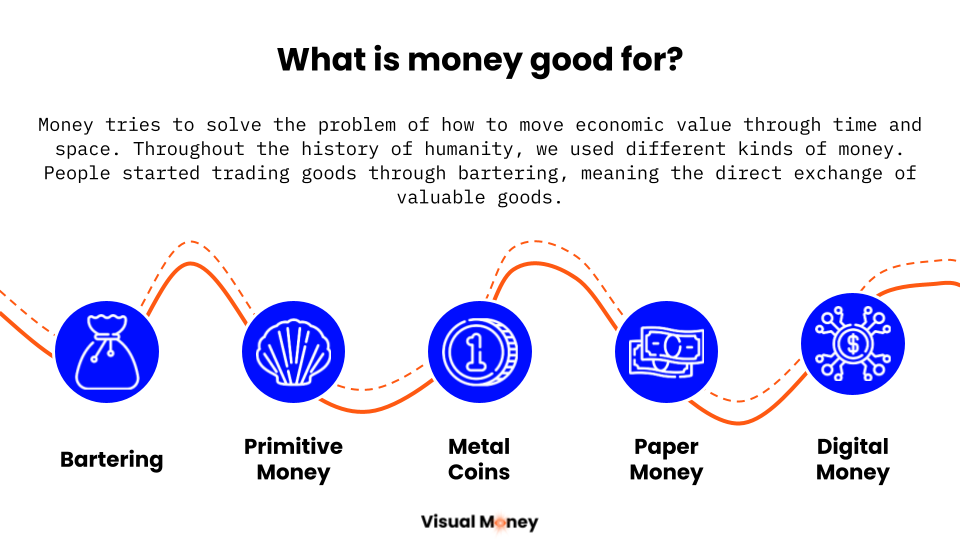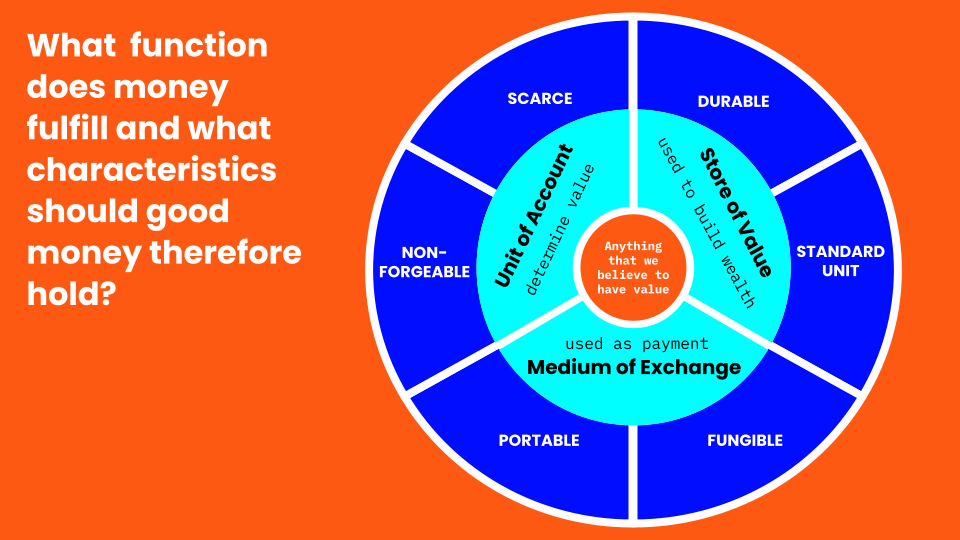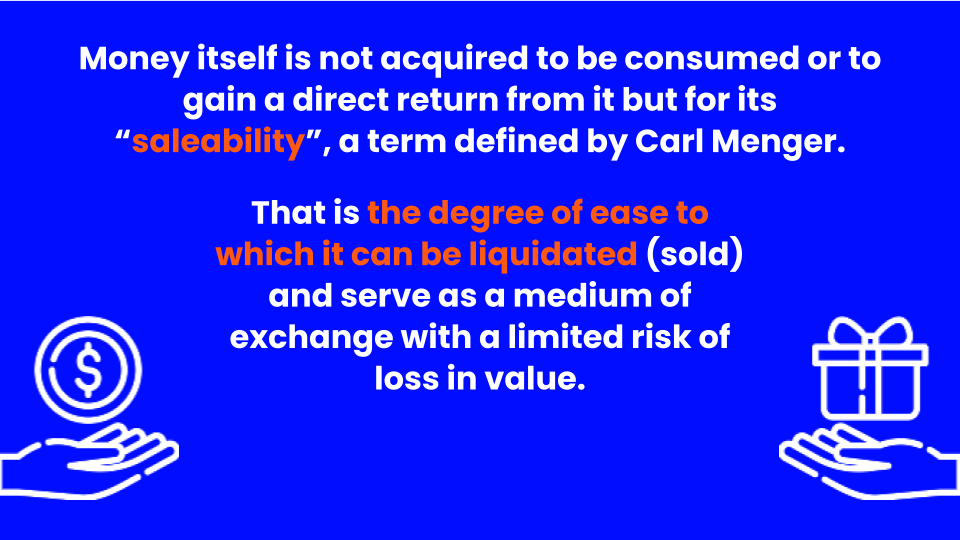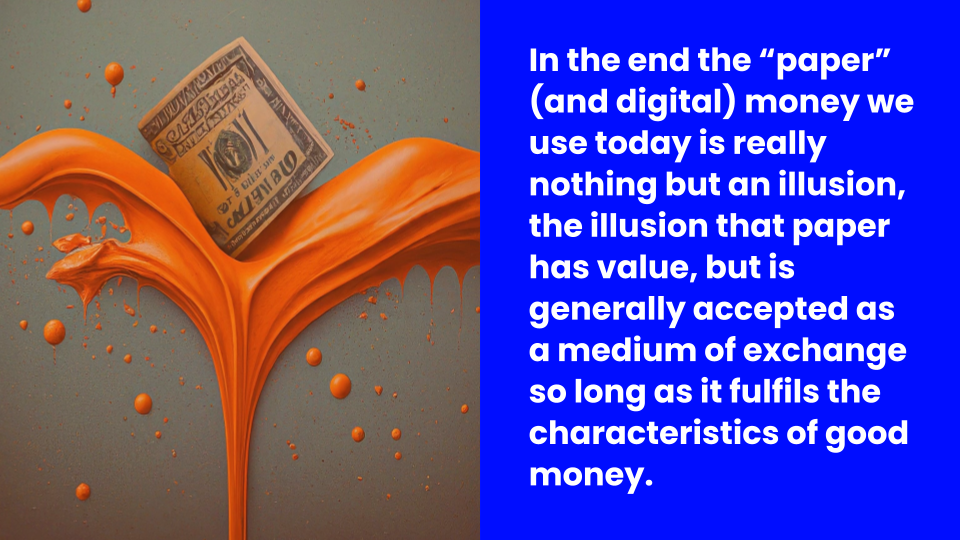
We all own it, some own more of it and others less and we all use it basically on a daily basis – Money, but what is Money actually?
The small sheets of paper in your wallet? The digital numbers in your bank account? As British economist Adam Smith, once wrote: “All money is a matter of belief, if we believe that something has value it can become money.”
How does Money get its value?
Think back when you were kids, didn’t you also trade toys with your siblings or friends? Pokemon Cards for example, remember those? My sister was more into Pokemon cards then I was, but the school yard pokemon card trading exchange was serious business. Some cards were worth more than others, for a Special Edition Birthday Pikachu you had to trade at least a Basic Pikachu + a Basic Jigglypuff + a Basic Snorlax. Don’t nail me on that, as said my sister was the Pokemon expert, but you get the point, right? We use items that we find valuable to trade for other goods (or sometimes services) and the rarer or scarcer these items are the more valuable they are considered.oney get its value?
What is money good for?
Money tries to solve the problem of how to move economic value through time and space. Throughout the history of humanity, we used different kinds of money. People started trading goods through bartering, meaning the direct exchange of valuable goods. Bartering however can be a little impractical, since trade can become difficult due to
- A lack of coincidence of wants: You are not able to find someone who is willing to trade in the good you want for to good you have
- Example: You have a phone to give away and want a TV, but you can’t find anyone who wants to trade his TV for your phone
- A lack of coincidence of scale: What you have may be not equally valuable as what you want, and dividing it into smaller units is not possible or would not make sense
- Example: You produce t-shirts and want a car, you would have to trade a huge number of t-shirt for a car, the car owner does not need that many t-shirts and the car can’t be divided in smaller units to equal the value of 1 t-shirt
- A lack of coincidence in time: what you have is perishable and what you want is durable, which would make it hard to accumulate enough of the perishable good to trade it for what you want in the future
- Example: You produce bananas and want a new sofa, you would have to accumulate a lot of bananas to pay for a sofa, in the time you need to collect enough bananas to pay for the sofa they would already have rotten, since they are perishable, and the sofa is not
- A lack of coincidence in location: what you have is in a totally different location to what you want
- Example: You have a house to trade in in New York and want a new one in Paris, the house seller in Paris wants a house but not in New York and you can’t bring your house to Paris
What functions does money fulfill?
To get around these problems of bartering, humans started trading through indirect exchange first using intermediary goods and later then primitive forms of money such as seashells or beads as a single medium of exchange. Therefore: Money = a good that is widely accepted as a medium of exchange.
We moved from those primitive forms of money to coins made from precious metals like silver and gold, paper money and digital money with the objective to improve on its characteristics to fulfil its functions. So, what are the functions of money?
- Medium of exchange: its ability to be used as payment for the purchase of any other type of good.
- Store of value: it’s ability to store value over time and build up wealth when it is accumulated.
- Unit of Account: it’s ability to express the prices of any type of good in its terms. (Imagine a world without a standard medium of exchange where the price of a good would have to be expressed in units of all the other goods – “A car is worth: 10k t-shirts/20 mobile phones/1M apples/…)
What characteristics should good money have to fulfill those functions?
Money itself is not acquired to be consumed or to gain a direct return from it but for its “saleability”, a term defined by Carl Menger. That is the degree of ease to which it can be liquidated (sold) and serve as a medium of exchange with a limited risk of loss in value.
Saleability of a good is determined by the degree to which it can solve the obstacles of trade mentioned before. Money should:
- Solve the problem of lack of coincidence in space: Money should be PORTABLE: it should be easy and fast to transport from one place to another and as light as possible to conveniently carry it along with you.
- Solve the problem of coincidence in time: It should be DURABLE: it should be immune to deterioration and not rot or be destroyed easily. And it should be able to also maintain its value throughout time. As we learned before the rarer something is the more valuable it is considered. So therefore, money should be SCARCE meaning it should have a limited supply and require a lot of work to mine or produce and NON-FORGEABLE meaning it should be difficult to reproduce or copy.
- Solve the problem of coincidence of scale: It should use a STANDARD UNIT that can be easily divided into smaller units or grouped, and it should be FUNGIBLE meaning that all units are exactly the same and the good is generally accepted by a large group of people.
Finally, the “paper” (and digital) money we use today is really nothing but an illusion, the illusion that paper has value, but is generally accepted as a medium of exchange so long as it fulfils the characteristics of good money.
Sources of inspiration:
- Jason A. Williams – Bitcoin: Hard money you can’t fuck with
- Saifedean Ammous – The Bitcoin Standard
- Jason A. Williams – Bitcoin: Hard money you can’t fuck with
- Gigi – 21 Lessons: What I’ve learned from falling down the Bitcoin Rabbit Hole

